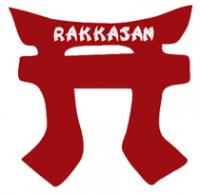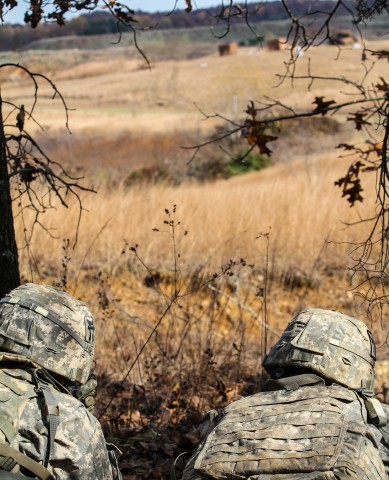Written by Sgt. Brian Smith-Dutton
3rd Brigade Combat Team Public Affairs


Fort Knox, KY – The 1st Squadron, 33rd Cavalry Regiment, 3rd Brigade Combat Team “Rakkasans,” 101st Airborne Division (Air Assault), traveled across Kentucky to train at Fort Knox’s cavalry grounds during a two week Field Training Exercise from October 28th to November 7th, 2013 to exercise their cavalry skills as a squadron.
“The purpose of this trip is to build on our core competency of providing reconnaissance expertise for the brigade,” said Lt. Col. Jason Curl, Commander of 1st Squadron, 33rd Cavalry Regiment, 3rd Brigade Combat Team “Rakkasans,” 101st Airborne Division (Air Assault). “Fort Knox provides an unparalleled capability for both gunnery and mounted maneuver.”

As a cavalry regiment, 1/33 Cavalry not only trains in dismounted tactics, but also trains in mounted maneuver tactics as well.
“For a long time, Fort Knox had been the place where cavalry scouts and tank crews were trained,” said 1st Lt. Brian R. Smith, platoon leader of 3rd Platoon, Troop A, 1st Squadron, 33rd Cavalry Regiment, 3rd Brigade Combat Team “Rakkasans,” 101st Airborne Division (Air Assault). “So Knox has all the ranges, lands and facilities to conduct mounted training, whereas Fort Campbell is geared more towards dismounted infantry tactics.”
Previously, the squadron trained like a small infantry battalion. This exercise trained the Soldiers to execute a much more specific unit responsibility, and developed their foundational skills as a reconnaissance surveillance unit.
 “As a cavalry squadron we have fewer Soldiers than an infantry battalion, but we have more firepower and more reconnaissance capabilities,” said Curl. “So we have to build on that expertise, to maximize our firepower, maneuver ability as well as our reconnaissance abilities.”
“As a cavalry squadron we have fewer Soldiers than an infantry battalion, but we have more firepower and more reconnaissance capabilities,” said Curl. “So we have to build on that expertise, to maximize our firepower, maneuver ability as well as our reconnaissance abilities.”
Although Fort Knox was chosen as the location of the FTX for the ranges, Soldiers with job types other than infantry and cavalry scout also took part in the training to practice their skills and gain experience.
“I’m a platoon medic and this is my first time getting to train with my platoon for an extended amount of time,” said Pfc. Joel Lydon, a medic assigned to 1st Platoon, Troop C, 1st Squadron, 33rd Cavalry Regiment, 3rd Brigade Combat Team “Rakkasans,” 101st Airborne Division (Air Assault). “This FTX was a great way for me to not only practice my job, but also build a strong bond with the Soldiers I could very well find myself with downrange.”
Curl highlighted other opportunities and training for both leaders and supporting participants during the exercise.
“While some troops are at the ranges we’ve also done a lot of staff training from non-fixed facilities while also conducting planning drills,” said Curl. “Our forward support troop has also stayed busy doing vehicle recovery operations and also fuel feeding and distribution operations.”
“This is the first time being gunners for a number of Soldiers here, and the fact that they are not only hitting targets but qualifying as crews demonstrates the pace that we are capable of picking up and learning on the fly,” said Smith.
With the completion of the two week field training exercise, the Soldiers of 1/33 cavalry regiment returned to Fort Campbell, KY, as trained and qualified vehicle crews.
“It’s nice to see that we can come out here and continue to assess our core competencies and our skills,” said Smith. “Gunnery is a skill set that needs to be continually trained on because there are certain skills that have value in Afghanistan and apply only in Afghanistan, but gunnery applies to anywhere in the world.”


